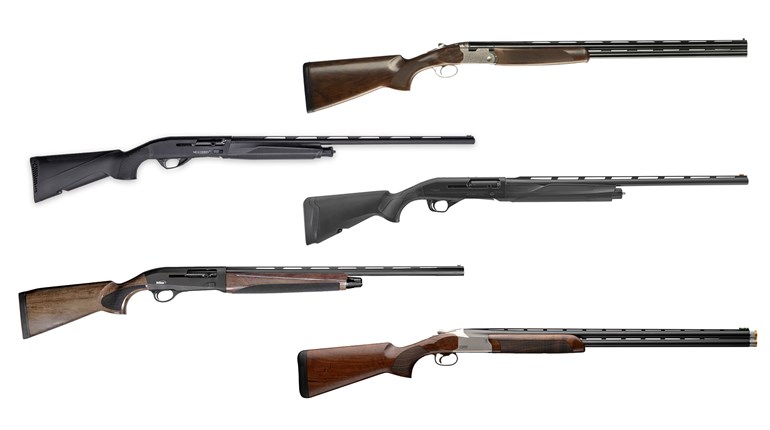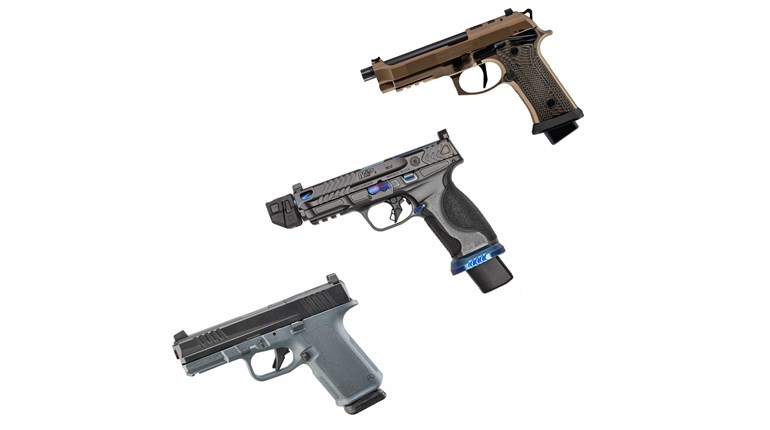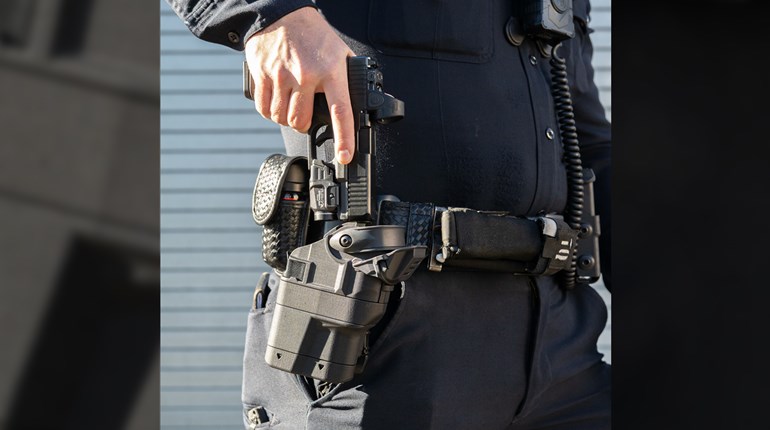
Although I can understand the instinct to be frugal as much as the next person, there are some subjects where this should not even be considered an option. While it might be okay to pick up the generic brand of chips at the grocery store, when it comes to life-and-death situations, there should be no cutting of corners.
A perfect example is the selection of a handgun for self-defense. One should choose a pistol that combines potent power, high quality and unassailable reliability. Unfortunately, this often comes at a steep price tag. In fact, I fervently recommend to people that they spend what it takes to get a firearm with these characteristics, even if it means tightening belts to make up the difference. However, while that can be easy to say, it can be much harder to do.
Following Up
So what is the solution? When I have been asked this question by acquaintances, I have suggested they consider law enforcement (LE) trade-in pistols. My reasoning is, by the nature of their duties and the research and testing resources available to the departments that select them, pistols formerly used by LE organizations can easily fit all the above-mentioned criteria.
Although tricked-out 1911s and the like can certainly be impressive, a semi-automatic pistol with a simple system of operation such, as double-action-only or one with a safety/decocker, certainly has its strengths. In addition, these pistols will be chambered for fully capable and vetted rounds.
And there is a surprisingly vibrant market in these guns. For example, the 1980s saw a wholesale movement in the LE community away from revolvers and toward high-capacity 9 mm pistols. However, by the 1990s, the then-new .40 S&W was taking the LE community by storm, resulting in many departments switching out their 9 mms for .40s. By the same token, the growth in popularity of polymer-framed pistols at the same time resulted in many steel- or aluminum-framed pistols being swapped for newer polymer models.
I do caution people to remember that a pistol being retired and surplused does not mean it is any less capable than the pistol replacing it. With rapid developments in both firearm and ammunition design every year, the LE community is often playing catch up with the current trends of the day, switching out pistols that are not necessarily outdated but sometimes simply passé.
Where to Go
So where should one go to find a good LE trade-in pistol? An excellent source for this type of gun is Century International Arms, a company renowned for locating and offering terrific deals on used or surplus firearms (as well as new ones).
In fact, this project began when I received the company's product mailer and noticed all the excellent pistols it was offering for extremely good prices. As I thumbed through the pages, I saw selections of pistols such as double-action-only Smith & Wesson 3rd Generation semi-automatic pistols and Beretta Centurions, as well as some unique offerings like a Walther P5, all ranging in conditions from good to very good to excellent in some cases.
However, one of the pistols listed on the pages caught my eye—a 9 mm SIG P6. Having long been a fan of SIG Sauer pistols, I recognized this pistol was a variant of the pistol—known commercially as the P225—developed for the West German police in the 1970s and dubbed the P6. Like all traditional SIGs, the P6 features a simple system of operation with a double-action trigger, no safety and a hammer-drop lever. The result is a pistol that can be carried like a double-action revolver, relying on the long heavy trigger pull to prevent accidental discharges.
Putting it in Practice
I put in an order for an excellent condition P6 and waited for it to arrive. The pistol came packed in the original German-marked, blue-plastic case with the original instruction manual as well as a shoulder holster rig, spare magazine and leather magazine carrier. The condition of the pistol was indeed excellent, with very little finish wear or scratches. As with all SIGs, the ergonomics and handling characteristics were excellent, with the slim grip size of the aluminum frame housing a single-stack, eight-round-capacity magazine. The sights of pistol did not have white dots or any sort of highlighting.
Of course, as a trade-in gun, the P6 is indeed a used pistol. As a result, the company encourages everyone to have whatever pistol they purchase inspected by a gunsmith to ensure it is safe to fire. After I had done this myself, I took the pistol out to the range to try it out. As I expected, it performed without a hitch.
Once all was said and done, I had picked up a used SIG Sauer pistol that was ready to go for roughly half the price of a brand new pistol. In addition, its unique provenance and history combined with the fact that the P225 is no longer offered by SIG made the P6 from Century even more interesting to me.
Close Look
Although the P6 proved to be an excellent choice for me, it was not the only choice. Any of the LE trade-in Smith & Wessons, Berettas or the Walther would have been just as sound a selection for someone looking for a solid, reliable and powerful pistol. However, due to the nature of the products and their sometimes short-term availability, it might be a good idea to keep a close eye on Century's website as there is no telling what may turn up next. Make sure you don't cut yourself out of a great deal!
Back to the Source
Although the SIG P6 from Century tickled my fancy from not only my appreciation of SIG Sauer's products, but also the history buff in me, there is another source for used SIG pistols—SIG Sauer itself.
While the company does not offer anything as exotic as the West German P6, the SIG does have a very nice Certified Pre-Owned program that offers pistols traded back to the company from LE organizations when they upgrade to newer models. The pistols are inspected by company armourers, steel parts are refinished and the guns are fitted with new parts if necessary. All are backed by a one-year warranty and packed in a special, red-plastic case.



































